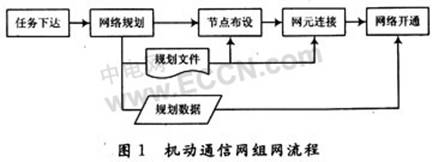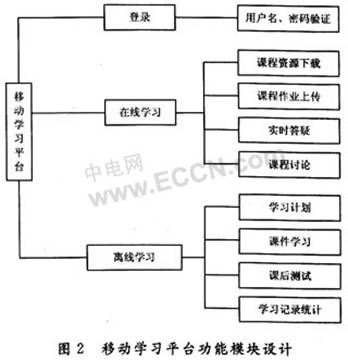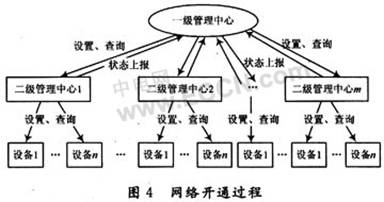Research and Implementation of Rapid Networking Technology of Mobile Communication Network
When an emergency disaster occurs that interrupts or blocks communication, when performing a mobile combat mission, when the fixed communication network is damaged and cannot be repaired in time, when there is no or little available communication facilities in a certain area and communication is urgently needed , Need to quickly establish a communication network to provide effective communication guarantees. As a communication network temporarily established according to the needs of the mission, the mobile communication network has flexible networking, strong combat response capability, and little influence from the terrain environment, and can play a huge role in the above applications. The task of the mobile communication network is sudden and has special requirements on the timeliness of the network. After the task is issued, the first problem is networking, and how to quickly network according to the task requirements is a topic that needs in-depth study.
1 Networking process of mobile communication network
The mobile communication network has the characteristics of mobility, speed, and flexibility. The networking speed is a manifestation of the rapid characteristics of the mobile communication network. The speed of the networking directly affects the performance of the task. It can be seen from the flow chart of the mobile communication network's networking that the mobile communication network's networking needs to go through four links: network planning, network layout, network element connection and network opening (see Figure 1). Therefore, shortening the time required for these links through corresponding technical means is the core of rapid networking technology.
2 Network planning
The main functions of network planning are to design the topology of the target network according to the networking requirements, to plan the parameters for quick provisioning of devices and dynamic network management strategies, and to complete the pre-configuration of the decentralized management strategy of the network management center. The software that assists the operator to complete the network planning is called the network planning software. This software can provide the operator with a large amount of auxiliary information such as geographic information and device parameters, reducing the complexity of the planning operation; at the same time, its planning process, data generation and distribution, Functions such as plan management reduce the difficulty of planning operations. Using network planning software can improve planning efficiency and accuracy, and shorten planning time. Especially when the mission is urgent, the software can also be used for network planning on the way, which is helpful for the rapid opening of the network. 
The network planning software mainly includes functional modules such as the main program framework, geographic information platform application, plan management, network topology planning (including node planning and link planning functions), device parameter planning, network performance evaluation, and result output.
The main process of network planning is as follows (see Figure 2):
(1) According to the requirements of the location of the task, prepare the geographic information data of the corresponding area to lay the foundation for the realization of the function of communication site planning;
(2) Establish a network of available equipment resource libraries such as communication equipment resources to provide support for network planning and network resource allocation;
(3) Determine the user type, number, location, business volume and other data according to the task requirements to generate user business data;
(4) According to the previously generated equipment resources, geographic information, user distribution, business requirements and other conditions, carry out user access planning and configuration to meet the access needs of network users;
(5) According to user access planning results and network invulnerability requirements, plan the best network topology and select the type of transmission equipment used on the link;
(6) According to the relevant frequency information provided by the frequency management system, the user's input frequency planning limitations, link device configuration and network topology, rationally allocate the operating frequency and backup frequency of the transmission equipment;
(7) According to the results of network planning, allocate communication equipment, and then output basic data reports such as the working frequency of wireless transmission equipment and node connection configuration required for network opening to guide the network opening;
(8) After completing the network topology planning, according to the needs of network users, complete business planning functions such as pre-allocation of phone numbers, unified planning of IP users and IP addresses, and configuration of business routes;
(9) Record all the planning data to generate a network planning database and network planning file. 
3 Node layout
The primary task of node layout is to transport the node to the designated location. Normally, the constituent unit of the node of the mobile communication network is a communication vehicle. After accepting the task, it will go directly to the task area. However, for areas where islands, ships, no roads or road damaged areas cannot be reached quickly, networking must be done through movable nodes.
The loading method of the movable node is to install the communication equipment into a unified and standard movable chassis and fix it. In transportation and opening up, the equipment and the transportable chassis can be separated or merged together. The basis for the merger and separation is the needs of the task. The removable loading method is actually a "modular" loading system. The chassis replaces the rack and the workbench. The interconnection cables are placed in a special cable box. When in use, as long as the power supply and environmental conditions meet the equipment requirements, you can Widely used in regions. The removable chassis has a uniform appearance size, a certain resistance to shock, vibration and rain. The removable chassis adopts standard sizes, and can be used in different combinations and relatively stable stacking methods according to different application environments. Removable nodes have high flexibility and strong adaptability to the application environment. The transportable nodes can be quickly transported to the mission area by means of shipping, air transportation and manual removal, which is beneficial to complete the deployment of nodes in a shorter time.
Another important task of node layout is to connect the physical lines between nodes. Optical fiber lines have large capacity, small delay, and low error rate, and are the first choice for interconnection between nodes. When there is no fiber optic cable installed in the mission area and it needs to be laid on site, the laying speed becomes the key to the rapid deployment of nodes. For the flat terrain environment, vehicles can be deployed between the two sites; for complex and dangerous terrain environments (such as swamps, jungles, etc.), it will be very difficult to use artificial or ground deployment platforms. At this time, the method is to use optical cables Winding into a coil, using the aircraft as an air-based platform to achieve rapid laying. Restricted by weight and volume, it is more suitable to use micro-optical cables instead of traditional field optical cables when using aircrafts. Its continuous length can reach more than 50 km.
4 Network element connection
The main work of the network element connection phase is to establish the connection between the nodes at the link layer under the premise that the network nodes are in place and the physical line connection is completed. At this stage, the number of manual operations will directly affect the connection speed of the network element. Adaptive networking and automatic establishment of the management channel automatically complete some operations by the device according to the preset settings, thereby reducing the manual setting of network nodes and enhancing the network. The autonomous operation capability of the network accelerates the connection speed of network elements.
4.1 Adaptive networking
Network elements with adaptive networking can automatically identify access peers after they are connected to each other, perform rate adaptation for physical interfaces with the same attributes, and automatically report the connectivity status of the interface to higher-level processing. The core switching and transmission equipment in the network stores the device number, port number, slot number, and access port rate of the peer node connected to it to form a topology information database of interconnected devices. No pre-configuration is required for voice and data services, and PVC or SVC channels can be directly configured on the interconnected trunk and service ports for service transmission.
Adaptive networking is implemented from different layers such as link layer protocol and routing protocol. Through the link layer protocol to achieve dynamic identification of the nodes at both ends of the relay link, obtain node-to-end information and link-related characteristics, perform node security identification, detect the relay link on and off status and report to the upper layer; The dynamic routing protocol automatically exchanges routing update information and automatically calculates and updates the core routing table, so that the network routing is automatically updated as the network topology changes (see Figure 3). 
The routing protocol of the network node interconnection relay interface is configured by default as a dynamic routing protocol. Because the Router-ID of each transmission switching device is unique, there is no need to care when the network node accesses the network. The routing information in the network will automatically interact and update the routing information in an instant, so that IP services can follow the network node's Access for immediate use.
4.2 Automatic establishment of management channel
The management channel is a data transmission channel through which the first-level network management system directly delivers planning data and monitors the network status to the second-level network management system and the entire network. The manual configuration method needs to be operated separately on each node, the completion time is determined by the latest node, the efficiency is very low and the requirements for the operation are high; the automatic channel establishment is completed automatically by the device according to the preset settings, which takes time Almost negligible. The implementation of establishing management channels for various node devices is roughly the same. The following example illustrates this process by using a frame relay PVC to establish a management channel on an ATM switch.
All switches use a unified frame relay interface for network management equipment access. The PVC data of the frame relay interface used by the network management equipment to all relay interfaces of the switch is set to a fixed value. According to the principle of convenient operation, the PVC interworking mode is set to the transparent mode for business interworking, because the transparent mode does not require the DLCI value of the PVC of the frame relay end of the interconnected switch to be the same, so that the planning data can be flexibly set. Considering that the network management channel is only used for sending planning data and querying and reporting network status, the bandwidth of these PVCs can be set to 64 Kb / s. The network management channel PVC has the highest priority, and users cannot delete it arbitrarily. This ensures that the resources of the network management PVC are not preempted by the business PVC, and there will be no unsuccessful establishment of the network management PVC due to resource occupation.
The above process and steps are solidified in the installation file in the form of an initial configuration file, which is called by the switch at startup to automatically load the management channel PVC. Regardless of the relay interconnection of each network node, the network management information network can be connected. The primary network management system can manage the entire network when any node is connected to the secondary network management center.
5 Network activation
The main work in the network opening phase is to distribute and run the business data planned by the network planning software. Using the file transfer function of the network management system and using the management channel established during the network element connection stage, the primary network management center distributes the planning data prepared according to the task requirements to the secondary management centers, and the secondary management center configures the planning data To each device in the network node. The entire process is automatically completed by program control, which reduces the manual operation of data distribution and shortens the time for network opening. After the planning data is delivered, the first-level management center reports the device status in the network node according to the second-level management center or directly inquires about a second-level management center to determine whether the distributed data has been successfully configured and whether the network is in a usable state. Complete the opening of the network, the process shown in Figure 4. 
6 Conclusion
Fast networking technology is a key point of mobile communication research, and the research of fast networking technology has also penetrated into the entire process of networking. The research and application of various methods such as network planning software, node movement, rapid cable laying, adaptive networking, automatic establishment of management channels, and automatic data distribution have greatly increased the speed of mobile communication networks.
Iron Battery,Nife Batteries Australia,Nife Battery 600Ah For Asutralia,Ni-Fe Battery 450~600Ah
Henan Xintaihang Power Source Co.,Ltd , https://www.taihangbattery.com